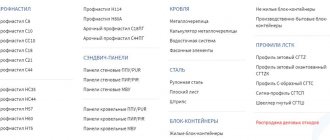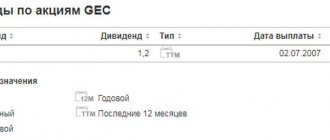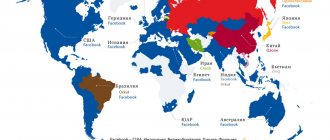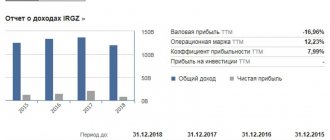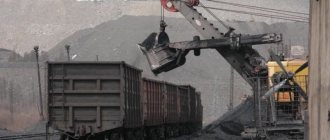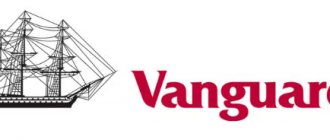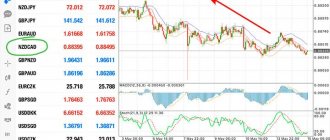Good afternoon, dear readers!
Palladium is a precious platinum group metal called the “little brother” of platinum. It is used in the automotive industry (75% of consumption), chemical and jewelry industries, medicine, electrical engineering, and for minting commemorative coins.
It is found in the earth's crust 30 times less often than gold. Transactions with precious metals can be carried out using bullion, impersonal metal accounts, on Forex and on commodity exchanges. Today we’ll look at palladium quotes and figure out whether it’s worth investing in the metal.
How have quotes changed over the past 10 years?
The analysis of changes in palladium quotations must begin with data from 2000-2001, when they reached their maximum historical values. During 2000, the price of the precious metal on world exchanges rose from $484 per ounce to $811, that is, by 67%. This trend did not last long: after the January 2001 peak at $1,050 per ounce, quotes went down. A new round of price growth emerged in 2005, during which palladium rose in price from 189 to 258 dollars per ounce. The movement of quotes is well reflected in the price chart for 5 years - from 2005 to 2010. Another decline in the precious metal market was observed at the end of the crisis year of 2008.
Metal purchase and sale prices in rubles during this period changed in a similar way. At the end of 2005, palladium sales rates for compulsory medical insurance at Sberbank were equal to 250 rubles per gram of the element. By the end of 2007, this value rose to 313 rubles per gram, and the following year fell sharply to a level of 185 rubles per unit of weight.
Change in palladium rate over the year (USD/1 troy ounce, London fixing):
A palladium chart compiled over a period of 10 years helps to track the nature of the movement of metal quotations. The gradual growth of rates, which began in 2005, gave way to a decline due to the global crisis of 2008. Then a new stage of growth in quotations began, the nature of the movement of which in 2011-2013 became spasmodic and difficult to predict. The price of the metal during 2010 increased from 425.7 to 788.6 dollars per troy ounce; indicators as of December in the next three years provided a positive trend for the trend: the price of palladium in December 2011 was 649.35 dollars per ounce, 2012 year – 697.3 dollars, 2013 – 720.7 dollars. The price of the precious metal peaked in 2014; at the end of August, an ounce of the element cost $896.3. Then prices gradually began to decline and, as of today, have settled at about $600 per ounce.
[palladium]
The price of a gram of material for compulsory medical insurance at Sberbank changed in accordance with world rates. In the last two years, their relationship has been problematic to track due to significant changes in the exchange rate of the American currency against the ruble. During the peak of palladium quotations on world exchanges at the end of August 2014, the selling rate of the element on compulsory medical insurance in Sberbank was 1,137 rubles per gram. Now the cost of a unit of precious metal on compulsory health insurance is at the level of 1,300 rubles.
Converting Pinyin to Palladium system
We can write down Chinese characters in Russian transcription directly using Chinese-Russian dictionaries, in which the readings of the characters are given immediately in Cyrillic.
But you can also use Latin writing, in particular using the most common writing system today - pinyin.
Pinyin (Recording the sounds of the Chinese language) is a system of Latin transcription of Chinese characters that has official status in China. This system was adopted in 1958, authored by Zhou Yuguang. Pinyin is used throughout the world as the official Latin transcription of names and titles from the People's Republic of China.
Zhou Yuguang (1906 - 2017) - linguist and economist, creator of the Pinyin system. He is a long-liver, he lived 111 years! Real name: Zhou Yaoping.
In modern Chinese, hieroglyphs are usually used to write words. However, to simplify the writing of Chinese words using the Latin alphabet, a system of 422 syllables, Pinyin, was developed, which corresponds to the phonetic system of the Chinese language of the official dialect of Putonghua.
Reasons for changes
Periods of decline and growth in quotations of a precious element are caused by certain factors, therefore, the analysis of moments of sudden changes must be carried out together with an analysis of the factors accompanying this situation. The sharp rise in the palladium chart in 2000 is also explained by the sharply increased demand for the metal as a raw material for the production of automotive catalysts. The change in quotations in those years was facilitated by the adoption of decisions in the EU on restrictions on emissions. To ensure that vehicles meet accepted requirements, there is a need for high-quality automotive catalysts. Since previously quite expensive platinum was a component of such chemical compositions, representatives of the automotive industry turned their attention to cheaper palladium, which has better properties.
The new stage of growth in palladium rates, which began in 2010, is due to the global economic situation. Economic growth, which began after two years of crisis, led to increased consumption of precious metals in various industries. The palladium price began to rise for three reasons:
- There has been a positive trend in demand for palladium jewelry;
- The metal again replaced platinum in the production of autocatalysts due to the rise in price of the latter;
- The demand of other industries for metal has increased.
Further growth in quotations was facilitated by both the promotion of the metal among jewelry lovers and the energy crisis in South Africa, the leader in the supply of platinum group metals. Due to disruptions in the supply of platinum from South Africa and the rise in its cost, the automotive industry has again returned to palladium, which has also increased in price.
The forecast for 2013 contained data on a decrease in the supply of metal on the market. Among the reasons for this situation, experts cited a reduction in the volume of Russian raw material production, the depletion of reserves of the Russian Gokhran and problems in South Africa. The current market situation has led to palladium rising again. Its price at the end of 2013 approached $720 per ounce, and the quotes chart went up.
Platinum and Palladium Market Report 2021. Part One – GFMS
Here is a translation of the most significant points of the report. Part one.
1. General overview and outlook
After a tough 2021 for the platinum group metals, performance for each of them varied significantly in 2021. The price of platinum has fallen steadily, although not too much compared to previous years, less than during the cyclical downward trend that began in 2011, reaching a 12-year low. Regarding palladium - and even, surprisingly, not the most popular metal in this group, rhodium - we can say that these metals have risen in price: the former recorded a record annual average value, and rhodium rose in price by 59%. Volatility has led to an unusual situation for all three major platinum group metals: they posted the highest prices at different times within the same year.
These figures were achieved despite shortages of platinum and palladium. However, the scale of the shortage varied, as palladium outperformed platinum in this regard by a factor of 20. As a result, the ability to cover these shortfalls by mobilizing above-ground reserves also varied. Amid the negative news on diesel, and therefore bad news for platinum, the generally balanced platinum market remained in a state of contango (i.e., overpricing).
The palladium market has seen extremely high rental rates and periods of reduced supply, sometimes leading to backwardation (a situation in which the value of a futures asset is lower than the value of the underlying asset). In fact, the situation would have been even more extreme if there had not been significant profit-taking on the part of unit holders in the respective exchange-traded funds. The large rise in palladium was achieved despite a 4% increase in supply due to high production levels in Russia and increased volumes of scrap in the form of autocatalysts. This trend was fueled by a downtrend in equities, helped by another year of strong demand growth from the autocatalyst sector and significant buying from the Global Platinum Fund.
As for rhodium, after several years of declining prices, the third-largest metal of the platinum group has finally begun to recover. This was helped by strong supply and demand indicators, with production down 2%, mainly due to a decline in Russia as supplies of platinum group metal-rich pyrrhotite concentrate ran dry and sales of autocatalysts rose.
Platinum in 2021
Despite rising autocatalyst recycling rates and robust mining rates, platinum supply has weakened due to lower jewelry scrap volumes, leaving total supply virtually unchanged in 2021. On the demand side, performance eased slightly as stronger industrial demand coupled with outpacing declines in jewelry investment and overall retail investment, leaving the market's overall physical deficit unchanged at 0.05 million ounces for the fourth year in a row. (1.6 tons).
Platinum production fell slightly in 2021 by 1% to 5.92 million ounces (184.2 tonnes) due to declines in South Africa, Zimbabwe and Canada. South Africa's production decline was influenced by maintenance work, safety concerns and mine closures. In other countries, normalization of ore reserves has led to losses, coupled with a decrease in the amount of metal in mined ore. High-cost mine closures and high metal prices reduced costs by 2% when calculated as Total Cash Costs + Capital Expenditures, while earnings before interest, taxes, depreciation and amortization increased by 14% to $1.7 million ( excluding Russia) on an annual basis. The reduction in costs led to the fact that the number of unprofitable enterprises amounted to 32%, which is lower than in 2016 - 35%.
Jewelry recycling volume decreased 5% in 2021 to 0.66 million ounces (20.5 tons), the lowest since 2009. Declining platinum prices were the main reason that did not stimulate sales of old jewelry. The largest declines were recorded in Japan and China, at 7% and 4% respectively, although most markets also fell last year, with the exception of North America, which was up 2%, and other regions saw double-digit growth. , although from initially quite low indicators.
Scrap volume in the form of autocatalysts recorded good growth of 5% year over year in 2021, the second consecutive year of growth, in this case reaching approximately 1.2 million ounces (36.9 tons). Falling steel prices in recent years have led to a decline in the number of end-of-life vehicles being scrapped, but last year showed signs of a steady recovery after modest growth in 2021. More developed markets showed mixed results, with strong growth in Europe and a slight increase in North America, partially offset by a slight contraction in Japan. Scrap collections in developing countries were more impressive, rising by double digits, with China being the best performer, achieving 23% growth.
On the demand side, platinum used in autocatalyst production rose 7.1% last year to 3.48 million ounces (108.2 tonnes), despite negative sentiment in the key diesel vehicle market, particularly in developed countries. countries. Thus, this figure has been growing for the fourth year in a row, now at the highest level in a decade. Europe still ranks as the largest region in terms of platinum consumption, but its share of platinum demand fell from 46% to 45% in 2021, reflecting a low average platinum supply, with platinum demand down 2%. up to 1.4 million ounces (45.1 tons). China again showed outstanding statistics in this regard, as demand in the country grew by 16% in 2017, although it had been relatively low before. Meanwhile, demand in North America and Japan grew 3% last year, while other regions grew 4% year-on-year.
Jewelry demand fell 5% year over year to about 2.2 million ounces (68.6 tons), continuing a four-year trend. The largest declines were recorded in China and Europe, with output in these key markets falling by 8% and 6% respectively. In China, competition from karat gold jewelery reduced platinum's share of the market, while lower demand was also seen in the watch market in Switzerland, and the decline in the UK was due to the depreciation, which was the main reason for the decline in Europe. generally. Additionally, figures in Japan and North America were broadly stable, falling just 1%.
The volume of platinum used for industrial purposes (excluding autocatalysts) rose 7% to a record level. The most pronounced gains were seen in the oil and glass industries, reaching 27% and 22% respectively, with the former market receiving additional support from China. Additionally, the electronics sector and other industries also recorded major increases, with the former benefiting from strong demand driven by the hard drive manufacturing and auxiliary storage market. The only exception last year was demand from the chemical industry, which decreased by 3% year on year.
Retail investment volume fell 45% in 2021, by approximately 0.3 million ounces (9.4 tons). As a result of this severe decline, the second in a row, investment demand fell by 279 thousand ounces (8.7 tons) from its peak in 2015. Demand from Japan fell 55% last year, even as the price of platinum remained below the psychologically important level of 4,000 yen per gram. Elsewhere, demand in North America and Europe also fluctuated as competition from interest-earning asset classes weakened demand.
Palladium in 2021
The physical shortage of palladium fell last year to 1.2 million ounces (37.3 tons), slightly off the record level recorded in 2021. The 5% increase in total supply was partially offset by slight growth on the demand side. Taking into account the adjustment in stock movements (based on withdrawals from exchange-traded funds and company shares), the net balance fell to a deficit of 0.91 million ounces (28.2 tons), the largest since 2014.
Palladium production rose 3% to 6.74 million ounces (209.7 tonnes) last year as production increased in Russia, South Africa and the US but fell in Canada. Increasing palladium grades in mined ore helped improve the balance despite challenges in South Africa's platinum belt.
At the asset level, the largest increase was recorded in the Russian one, which was achieved thanks to the processing of concentrate purchased from Rostec and material in the process of processing from the Polar and Kola divisions.
Scrap supply in the form of autocatalysts reached a record high last year, increasing 10% over 2021 volumes to 2.16 million ounces (67.2 tons). A rebound in the volume of end-of-life vehicles being scrapped, coupled with higher palladium prices, has led to a build-up of stocks of recycled metal. The big percentage increase came from China, where supply rose 22%, but Europe posted the standout volume, up nearly 17% to a record high, as higher commodity prices prompted refiners to turn to the metal. This has been the case in other regions: in North America, for example, the volume of palladium mined from scrap has increased due to more of the metal in older cars.
Last year, scrap jewelry supply fell 28% to 0.47 million ounces (1.5 tons), the lowest since 2003. This result may seem counterintuitive given that the average palladium price rose 39% last year, but this was largely influenced by a large drop in Chinese refining volumes following the collapse of the domestic jewelry industry. In other regions, scrap volumes increased as a result of higher prices, especially in Europe, where they increased by 5%.
Demand for palladium for autocatalysts rose 4% to 7.9 million ounces (245.1 tonnes) last year, outpacing demand for new cars and hitting a new record high. This was a result of increased use of the metal, particularly in parts of other regions and China, but also in North America, where exhaust emissions regulations were further tightened. China introduced "China 5" emissions standards for passenger cars in 2021 and "China V" for trucks last year, which had a significant impact on demand for platinum group metals, which increased by 5% year on year. North America has begun implementing the Tier 3 standard, which we believe will also have a positive impact on palladium use, although not to the same extent as in China. Demand in Europe grew modestly in 2021, driven largely by field testing on exhaust emissions, which argued for increased use of platinum group metals and increased market share for gasoline vehicles.
Despite the mixed performance, aggregate demand from other industries was little changed last year, down less than 1% to 1.93 million ounces (60 tonnes). The decline was seen in the electronics and dental industries, both of which have seen declining demand in recent years due to palladium substitution. At the same time, the chemical industry, oil production, etc. sectors showed serious year-on-year growth, the first of which was due to an increase in capacity at factories for the production of purified terephthalic acid.
Palladium jewelry production fell for the ninth year in a row, down 3% to 0.28 million ounces (8.9 tons). The complete collapse of the Chinese market in recent years has had a noticeable impact on the industry as a whole. Global demand last year was 78% or 1 million ounces (31.1 tons) lower than ten years ago. Falling demand in Europe and North America contributed to lower global volumes as higher palladium prices prompted less interest from consumers and manufacturers sought more affordable alloy options for white karat gold jewelry.
Finally, modest increases in demand in North America and Europe saw retail investment in palladium rise 19% last year to 0.53 million ounces (1.7 tonnes), the highest level since 2009. Demand from North America, which accounts for more than 70% of global volume, was up 18% from 2021 volume, driven in part by the launch of the first palladium American Eagle coin by the US Mint, while demand increased in Europe by 12% year on year.
Forecast for 2021
After six years of continuous decline in platinum, we expect a gradual recovery to begin this year. In our opinion, the rate growth will be due to a small deficit this year, namely at almost 0.3 million ounces (22.5 tons). We believe this will also be helped by reduced supply, mainly from South African mines, as well as increased demand. In terms of production, the decline will be due to a combination of factors: reduced capital expenditure in recent years leading to reduced activity at new projects, as well as the closure of some large mines, notably Bokoni & Maseve.
At the same time, demand will increase due to economic growth, which will lead to increased use of this metal in a variety of industries, with the glass industry showing the fastest growth rate. Despite the negative outlook for platinum use in the automotive sector, we believe growth should be expected, albeit modestly. This will be driven by the increased use of metal in emerging markets, as well as the growing share of the heavy-duty on-road and off-road mobile equipment segment in the world. It is not surprising that this growth will be offset by a decline in the market share of diesel passenger cars in Europe and Japan.
In this environment, we forecast platinum to exceed $1,000 an ounce for parts of the second half of the year, a mark that has only been breached for one week since February 2021.
Despite all these circumstances, in 2021 we believe palladium will overtake platinum for the first time in terms of annual averages. We also expect periods of reduced supply to occur, which will lead to higher rental rates. Our long-term bullish outlook is supported by rising demand in the automotive sector, which is not expected to weaken despite record prices as substitution for the metal is not currently underway (although various manufacturers are considering such a possibility should the price gap widen). In addition, there will most likely be a decrease in production in the two main countries in this regard - Russia and South Africa. However, aggregate supply is unlikely to change due to increased scrap volumes in the form of autocatalysts and improved production in Canada and the US.
Based on all of the above, we expect that for the first time in its history, the average annual rate of palladium will exceed $1 thousand this year.
2. Platinum and palladium prices
The average annual platinum price fell last year, from $989 per ounce in 2021 to $949 per ounce in 2017. Average 20-day price volatility fell 17% last year, down from 24% the previous year. Price volatility peaked for the year in January at 24%, and platinum hit a price bottom in December 2021, recovering from below $900 an ounce to $1,000 an ounce by the end of the month. The total volume of exchange-traded fund units decreased during the year by only about 14,683 ounces (0.46 tons), ending the year with 2.5 million ounces (80.1 tons).
Meanwhile, after rising 20.7% in 2021, palladium has overtaken its sister metals, recording 58% growth in 2021. Last year, palladium not only surpassed $1,000 per ounce, but also overtook platinum. The average annual rate increased by 42%, to $868 per ounce in 2021. Average 20-day exchange rate volatility fell from 29% in 2021 to 25% in 2021. Exchange-traded fund holdings fell 383,519 ounces (12 tons), or 22%, to end the year at 1.3 million ounces (41.2 tons). Palladium's big rise last year was largely the result of unexpectedly strong production in the auto industry, particularly in China. The past year has seen a global shortage of available palladium, with strong demand witnessed in China. In 2021, China's total vehicle production was 29 million units, up 3.2% year-on-year. This figure is much lower than the 14.5% annual increase recorded in 2021, but the numbers were strong to begin with and tax breaks were reduced in 2021.
Platinum rose in price from below $900 an ounce by the end of 2021, approaching all the way to $1,000 an ounce in January, finally breaking through the latter in February. However, the rate then retreated again from the level reached in March. According to weekly reports from the Commodity Futures Trading Commission, position activity among money managers was in line with price movements. Net long positions increased in January, reaching a yearly high towards the end of February of 49 tonnes at $1,029 an ounce. At the same time, palladium began to grow and did not stop. In 2021, the rate was around $670 per ounce, then quickly reached $700 per ounce, and approached $800 per ounce by the end of March. Speculators also began building up long positions towards the end of January, with net long positions increasing by 70% in three months, equivalent to 68 tonnes by the end of March.
In the second quarter, platinum regained some ground lost in early April, but then quickly lost it, ending the quarter down 3%. This is despite the weakening dollar (the dollar index fell from above 100 points to just below 96 points at the end of June). Speculators lost interest in platinum as money managers moved to net short positions from early May through early August (except for one week when the rate was effectively zero). This is the first time platinum has moved into net short positions since daily reports began being made public in their current format in June 2007. Meanwhile, after trading in a somewhat flat range for the first two months of the second quarter, palladium finally broke out of it in June, rising 3.3% for the month.
Platinum hit a 7-month low in July, but the price bottom was formed and even crossed the $1,000 per ounce mark again in late August-September. However, platinum fell rapidly towards the end of December, erasing all of its gains during the quarter, falling $2 per ounce from its late June price - leaving a sour taste in the mouths of disappointed investors. Unlike platinum, palladium's big move continued into the third quarter, as the price rose 11%, overtaking platinum by the end of the quarter. This marked an outperformance of palladium over platinum that lasted for more than six months until the price of palladium fell below platinum again (albeit only for a few days) in April 2021.
Platinum rebounded again in the final quarter of 2021 and even looked like it was gaining traction in November, but its gains were lost in December when the rate fell below $900 an ounce in some cases. Managed net positions also recorded six weeks of net short positioning in platinum in the fourth quarter, indicating a lack of speculative interest. Again, palladium continued its upward trajectory as speculative investors continued to build long positions. Palladium finally broke above $1,000 an ounce in October, and remained there in December after some volatility in between.
Platinum has generally disappointed investors in 2021. The global industrial sector recovered and the dollar softened - but these two factors were not enough to prevent platinum from falling to its lowest annual rate in 12 years. This can be partly explained by the decline in the share of diesel cars in the market, as well as a consequence of the increase in the share of gasoline cars. The platinum-to-palladium ratio averaged 1.61 in 2021 and fell significantly in 2021 to an annual average of 1.09 as palladium outperformed platinum in the third quarter. During the first four months of 2021, the average ratio fell to 0.95.
Platinum and palladium price correlations
Platinum and palladium belong to the same group on the periodic table of elements and therefore have similar physical and chemical properties. They are also often found together in mineral deposits. Both metals are used in automobile catalytic converters, electronics, jewelry, and also act as a catalyst in chemical processes. The automotive sector accounts for the majority of platinum and palladium demand for autocatalysts, accounting for 42% and 78% of total use in 2021, respectively. On the supply side, both metals occur in high concentrations, so South Africa accounted for more than 55% of total platinum supply last year. Palladium supply is more diversified, with production from South Africa and Russia accounting for 28% and 30% of total supply last year, respectively.
Despite the similarities between the two metals, their price correlation actually decreased throughout 2021 and until its end. The weakening of platinum last year clearly highlighted the large increase in palladium prices, which rose 58%. Platinum has been negatively impacted by the Volkswagen emissions scandal, and diesel engines continue to lose market share, clearing the way for gasoline counterparts, which certainly does not increase the attractiveness of platinum for investors.
The lack of positive news and attention for platinum has also caused apathy in this market, which has led to further declines in prices, and even the story of a possible disruption in the supply of the metal from South Africa did little to change the price. Although platinum is used in fuel cells, a technology that has the potential to change the very nature of the global auto industry, large-scale application of this technology has not yet begun, so the amount of platinum used last year was relatively small. At the same time, the fact that gasoline engines are taking market share away from their diesel counterparts and the auto industry has become an unexpectedly heavy palladium user in the past year has all caught the attention of market participants. As a result of all this, the platinum ratio increased from 1.34 to 0.88 by the end of 2021 as palladium outperformed platinum by the end of September.
Another interesting observation is that platinum had a higher correlation with gold than palladium last year. As mentioned above, the lack of positive news for platinum over the past year has forced the market to price platinum relative to gold, despite platinum's industrial performance and gold's monetary performance. However, despite the global recovery in the industrial sector last year, platinum has also lagged behind gold, with the gold-platinum ratio rising from an average of 1.29 in the fourth quarter of 2021 to higher than 1.30 by the end of the first quarter of 2017. exceeding the 1.40 mark by December last year. The average gold-platinum ratio reached an average of 1.33 during 2017, while the average for the period 1985-2017 was 0.82.
Platinum price correlations with gold and palladium have remained relatively high in 2021 as the main factor in the first quarter was a weak dollar, along with rising geopolitical tensions, including a second round of sanctions against Russia, and the possibility of a global trade war. Platinum continued to underperform gold as the gold-platinum ratio exceeded 1.40, which is high. At the same time, speculators took profit in the palladium market following a major rise in palladium prices in 2021, as a large number of long positions appeared in the futures market, as evidenced by data from the Commodity Futures Trading Commission. In fact, palladium lost 9% in value in the first four months of 2018, underperforming platinum prices for several days in April when markets worried about an escalating global trade war. However, palladium has recovered quickly, but remains mostly trading below $1,000 an ounce.
3. Retail investments
As for the coin market, in 2021 demand for them fell sharply by 41% year on year, to 0.07 million ounces (2.1 tons). This is a far cry from 2021, when demand hit an all-time high. Most of the demand was recorded in the first quarter, so this period accounted for 52% of total demand for the year. It was generally expected that the rally could continue, but with price action in a limited range, so investors were reluctant to increase their holdings of the metal. North America accounts for the lion's share of the coin market and increased from 54% in 2021 to 65% in 2021, but overall sales fell 29%. However, demand in Japan declined further, falling 64% year-on-year, with most of the purchases occurring in the fourth quarter of 2021. American Eagles sales were flat at 20,000 ounces (0.6 tonnes) compared to 2021, while sales from Canada's Maple Leaf and Austria's Philharmoniker were down.
What will happen next?
Should we expect a new increase in palladium rates on world exchanges? Experts agree that in the next couple of years the values of precious metal exchange rates will be quite stable and will not change sharply.
Demand for palladium will continue to be formed based on the volume of industrial consumption of the element; the dynamics of metal quotations will depend on it.
Investment and jewelry demand will remain at the same levels, so they will not be able to significantly influence the price of the item.
Since a significant increase in metal prices is not expected, there is no point in investing in palladium: you will not be able to make a profit in a short period. This precious metal is always considered by investors solely as a long-term investment. You can invest in it provided that you do not expect quick profits, or in the case when it is necessary to differentiate the investment portfolio by transferring part of the funds to a promising precious metal.
Palladium table - standard notation of Chinese pinyin syllables in Russian letters
This table shows all the syllables of the Chinese language. The recording of Chinese syllables in Russian letters is given according to the standard transcription of Palladium . This transcription is the standard for writing Chinese words (for example, proper names) in Russian letters in official Russian-language documents, on Internet forums, etc.
Since the Palladium system does not quite correctly convey some Chinese sounds, not the way the Chinese actually pronounce them, to develop the correct pronunciation, we recommend using a table of syllables with Russian reading that most closely matches standard Chinese pronunciation. However, writing Chinese syllables in Russian letters using the Palladium system is necessary to know in order to correctly write Chinese names and proper names in Russian.
| A | |||
| a - a | ai - ah | an - an | ang - an |
| ao - ao | |||
| B | |||
| ba - ba | bai - bai | ban - bath | bang - ban |
| bao - bao | bei - bay | ben | beng - ben |
| bi - bi | bian - bian | biao - biao | bie - be |
| bin - bin | bing - bin | bo - bo | bu - bu |
| C | |||
| ca - tsa | cai - tsai | can - tsang | cang - tsang |
| cao - cao | ce - ce | cen - cen | ceng - price |
| ci - tsi | cong - tsun | cou - tsou | cu - tsu |
| cuan - tsuan | cui - tsui | cun - cun | cuo - tso |
| CH | |||
| cha - cha | chai - tea | chan - chan | chang - chan |
| chao - chao | che - che | chen - chen | cheng - cheng |
| chi - chi | chong - chun | chou - chow | chu - chu |
| chuai - chuai | chuan - chuan | chuang - Chuan | chui - feel |
| chun - chun | chuo - cho | ||
| D | |||
| da - yes | dai - give | dan - tribute | dang - given |
| dao - dao | de - de | dei - day | deng - Dan |
| di - di | dia - dia | dian - dian | diao - diao |
| die - de | ding - ding | diu - du | dong - dun |
| dou - dou | du - du | duan - duan | dui - blow |
| dun - blow | duo - up to | ||
| E | |||
| e - e | ei - hey | en - en | eng - en |
| er - er | |||
| F | |||
| fa - fa | fan - fan | fang - fan | fei - fey |
| fen - fen (obsolete fen) | feng - feng (obsolete feng) | fo - fo | fou - fou |
| fu - fu | |||
| G | |||
| ga - ha | gai - guy | gan - gan | gang - gan |
| gao - gao | ge - ge | gei - gay | gen - gen |
| geng - gen | gong - gong | gou - go | gu - gu |
| gua - gua | guai - guai | guan - guan | guang - guan |
| gui - gui | gun - gun | guo - go | |
| H | |||
| ha - ha | hai - hai | han - han | hang - khan |
| hao - hao | he - he | hei - hey | hen - hen |
| heng - heng | hm - hmm | hng - hng | hong |
| hou - hou | hu - hu | hua - hua | huai - huai |
| huan - huan | huang - Huang | hui - hui (hoy, dick) | hun - hun |
| huo - ho | |||
| J | |||
| ji - ji | jia - jia | jian - jian | jiang - jiang |
| jiao - jiao | jie - jie | jin - jin | jing |
| jiong | jiu - jiu | ju - ju | juan - juan |
| jue - jue | jun | ||
| K | |||
| ka - ka | kai - kai | kan - kan | kang - kan |
| kao - kao | ke - ke | ken - ken | keng - ken |
| kong - kun | kou - kou | ku - ku | kua - kua |
| kuai - kuai | kuan - kuan | kuang - kuang | kui - kui |
| kun - kun | kuo - to | ||
| L | |||
| la - la | lai - bark | lan - doe | lang - lan |
| lao - lao | le - le | lei - lei | leng - leng |
| li - whether | lia - la | lian - lian | liang - Liang |
| liao - liao | lie - le | lin - lin | ling - ling |
| liu - liu | long - moon | lou - low | lu - lu |
| lü - lyu | luan - luan | lüe - lue | lun - harrier |
| luo - lo | |||
| M | |||
| m - m | ma - ma | mai - May | man - man |
| mang - man | mao - mao | me - meh | mei - may |
| men - men (obsolete myn) | meng - man (obsolete myn) | mi - mi | mian - mian |
| miao - Miao | mie - me | min - min | ming - min |
| miu - mu | mm - mm | mo - mo | mou - mou |
| mu - mu | |||
| N | |||
| n - n | na - on | nai - nay | nan - nan |
| nang - nan | nao - nao | ne - ne | nei - ney |
| nen - nen | neng - nen | ng - ng | ni - neither |
| nian - nanny | niang - nyan | niao - nyao | nie - not |
| nin - nin | ning - nin | niu - nude | nong - noon |
| nu - well | nü - nude | nuan - nuan | nüe - new |
| nuo - but | |||
| O | |||
| o - o | ou - oh | ||
| P | |||
| pa - pa | pai - pai | pan - lady | pang - pan |
| pao - pao | pei - pei | pen - pen | peng - pen |
| pi - pi | pian - pian | piao - piao | pie - pe |
| pin - ping | ping - pin | po - according to | pou - pou |
| pu - pu | |||
| Q | |||
| qi - qi | qia - tsya | qian - qian | qiang - qiang |
| qiao - qiao | qie - tse | qin - qin | qing - qing |
| qiong - qiong | qiu - qiu | qu - qu | quan - quan |
| que - tsue | qun - qun | ||
| R | |||
| ran - jan | rank - jean | rao - zhao | re - same |
| ren - ren | reng - zhen | ri - live | rong |
| rou - zhou | ru - zhu | ruan - zhuan | rui - chew |
| run - zhun | ruo - jo | ||
| S | |||
| sa - sa | sai - sai | san - san | sang - san |
| sao - sao | se - se | sen - sen | seng - sen |
| si - sy | song | sou - sou | su - su |
| suan - suan | sui - sui | sun - sun | suo - with |
| SH | |||
| sha - sha | shai - shai | shan - shan | shang - shan |
| shao - shao | she - she | shei - shay | shen - shen |
| sheng - sheng | shi - shi | shou - show | shu - shu |
| shua - shua | shuai - shuai | shuan - shuan | shuang - shuang |
| shui - shui | shun - shun | shuo - sho | |
| T | |||
| ta - that | tai - tai | tan - tan | tang - tan |
| tao - tao | te - te | ten - shadow | teng - ten |
| ti - ti | tian - tian | ||
| tiao - tiao | tie - those | ting - ting | |
| tong - tun | tou - tou | tu - that | tuan - tuan |
| tui - tui | tun - tun | tuo - that | |
| W | |||
| wa - wa | wai - wai | wan - wan | wang - van |
| wei - wei | wen - wen | weng - wen | wo - in |
| wu - at | |||
| X | |||
| xi - si | xia - xia | xian - xian | xiang - xiang |
| xiao - xiao | xie - se | xin - blue | xing - sin |
| xiong - xiong | xiu - syu | xu - xu | xuan - xuan |
| xue - xue | xun | ||
| Y | |||
| ya - I | yan - yang | yang | yao - yao |
| ye - e | yi - and | yin - yin | ying - in |
| yong - young | you - yu | yu - yu | yuan - yuan |
| yue - yue | yun - yun | ||
| Z | |||
| za - tza | zai - tsai | zan - zan | zang - tsang |
| zao - zao | ze - tse | zei - tsey | zen - zen |
| zeng - tseng | zi - tzu | zong - zong | zou - zou |
| zu - tzu | zuan | zui - tsui | zun - zun |
| zuo - zuo | |||
| ZH | |||
| zha - zha | zhai - zhai | zhan - zhan | zhang - Zhang |
| zhao - zhao | zhe - zhe | zhei - zhey | zhen - zhen |
| zheng - zheng | zhi - zhi | zhong - zhong | zhou - zhou |
| zhu - zhu | zhua - zhua | zhuai - zhuai | zhuan - zhuan |
| zhuang - zhuang | zhui - zhui | zhun - zhun | zhuo - zhuo |
Share on social networks:
Similar materials
- Chinese names. Writing, reading, meaning. Choosing a Chinese name
- Learning Chinese - tips and tricks. Where to start learning Chinese
- Russian names in Chinese
- Table of Chinese syllables with Russian reading, most corresponding to Chinese pronunciation
- Phrases in Chinese. Basic expressions in Chinese for tourists
Comments
+13 refulgent 12/27/2014 03:13 Thank you so much for this table!
Quote
+3 Meiying 01/24/2017 1:22 pm I’ve been learning Chinese for several years. I do not agree with this table, it is not entirely accurate. There is another way
Quote
+2 PP 01/25/2017 19:02 Quoting Meiying:
I've been learning Chinese for several years. I do not agree with this table, it is not entirely accurate. There is another way
I draw your attention to the fact that there is no need to pronounce it according to Palladium, it is not intended for this.
It is only used to write Chinese syllables in Russian letters. Quote +4 Arina 07/24/2017 07:00 I think I won’t learn Chinese
Quote
+1 PP 07.24.2017 13:55 The eyes are afraid, but the head does!
Quote
Update list of comments RSS feed of comments for this entry
Add a comment
JComments


